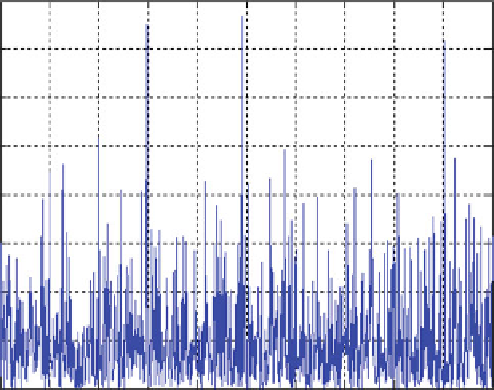Digital Signal Processing Reference
In-Depth Information
The corresponding distribution function is:
ð
f
X
ðxÞ
d
x ¼ l
ð
x
x
e
lx
d
x:
F
X
ðxÞ¼PfX xg¼
(5.61)
0
0
From (
5.61
), we have:
1
e
lx
x
0
;
for
F
X
ðxÞ¼
(5.62)
0
for
x<
0
:
Exercise E.2.13 shows that the exponential random variable
X
can be obtained by
the following transformation of the uniform random variable
Y
in the interval [0, 1]:
1
l
ln
ð
1
YÞ:
X ¼
(5.63)
An exponential variable with the parameter
l ¼
0.1, which is generated using
(
5.63
), is shown in Fig.
5.8
. The corresponding density and distribution functions
are shown in Fig.
5.9a
, b. Note that the low values of the random variable are much
more probable than the high values.
Exponential random variables are used in the study of queuing systems to
describe the time between arrivals of customers [MIL04, p. 64]. Additionally, the
exponential density is useful in describing the fluctuations in signal strength
received by radar from aircrafts [PEE93, p. 56].
Exponential random variable
80
70
60
50
40
30
20
10
0
0
100
200
300
400
500
n
600
700
800
900
1000
Fig. 5.8
Exponential variable with the parameter
l ¼
0.1

Search WWH ::

Custom Search